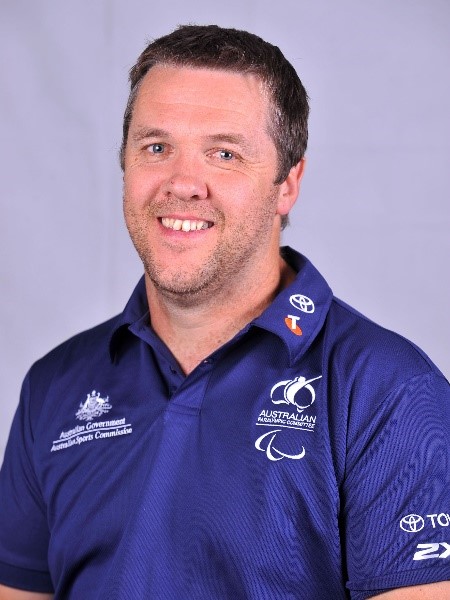Come back: the making of a five-time Paralympian
In 1987, Trooper Greg Smith, a 19-year-old tank driver with the Army’s 1st Armoured Regiment, fell asleep at the wheel while driving is car to Ballarat. He was on his way home for some short leave after attending a physical training instructors’ course at the School of Artillery in Sydney. The car crash that followed left him paralysed from the neck down.

‘It was very, very tough,’ he says from Buninyong, his home near Ballarat. ‘I had my whole life ahead of me. I loved my life in the Army. I felt very positive about the things I was doing there. And all of that suddenly went out the window.
‘Back then, when I was medically discharged, there were no avenues to be re-employed, or to remain working for the Army. My job was going to end. I still struggle with that today. I feel guilty that I didn’t finish my career in the Army – I signed up to put my life in the service of my country, and I wasn’t able to fulfil that commitment.
‘When I think back now, I probably should have got some mental health support, but it just wasn’t really on people’s radar back then.’
Greg says it took him about 10 years to get over the psychological impact of his disability, and even now he struggles sometimes. He’s the father of three young boys who are at a very active stage in their lives, and there are times when having to use a wheelchair for his everyday mobility means he can’t participate as much as he’d like to. He can move his arms but his hands have very limited function.
What’s helped him along the way has been the support of his family and friends.
‘After the accident, my mother never gave up on me,’ he says. ‘She made it clear that she was there for me, but didn’t fuss over me or treat me as fragile. She let me pick myself up. Same with my friends. They treated me exactly the same as they always had.’
There were two other factors that helped with Greg’s recovery. He’d only been in the Army for 18 months, but that had been enough to instil in him a commitment to overcoming challenges and the self-discipline to do so.
The other factor was sport. Greg had always been really into it as a kid, and during his rehabilitation another patient lent him a racing wheelchair. He took part in his first racing event a year after his accident.
‘Sport gave me something to motivate me. It gave me another challenge. That was what the Army had given me: daily challenges. My whole life now revolved around sport, and distracted me from sitting around feeling miserable for myself.’
Greg basically trained 7 days a week for 4 years, and in 1992 went to Barcelona and competed in his first Paralympics, where he won 2 bronze medals and one silver (in the 4 x 100m relay, the 4 x 400m relay and the marathon).
At the 1996 games in Atlanta, he won a silver in the men’s 5000-metre T52. Then at the Sydney Games in 2000 he won 3 gold medals (in the men's 800 m T52, men’s 1,500-metre T52 and men’s 5,000-metre T52 events).
‘Winning gold at Sydney was an incredible feeling. Not winning gold at Barcelona was probably good in a way. It reminded me that just because you don’t reach your goals immediately, doesn’t mean you give up. I just kept going for it. It ended up taking 12 years for me to win gold.
‘At Sydney, I was fortunate that it was on home turf. Friends and families could come at watch. So the win was not just for myself but for my family who supported me all through the journey.’
After the Sydney Games, Greg felt he had achieved all he wanted to in wheelchair racing, so switched to wheelchair rugby. One of the benefits of this was the camaraderie that he had missed since his Army days. His team – the Australian Steelers – won silver at the 2008 Beijing games, and at the 2012 London games they were the first Australian Paralympic rugby team ever to win gold. He was also the flag-bearer at the opening ceremony for the Australian team.
Greg has retired from competitive rugby and now works for Paralympics Australia as the strength and conditioning coach with the Steelers. To do this he has drawn partly on the skills he acquired as a fitness instructor in the Army.
Though he went with the team to Rio in 2016, he decided not to travel to Tokyo, partly because of COVID but also because his absence would have impacted on his young family. Not being in Tokyo was hard for him, though he monitored the team remotely and supported them any way he could.
In 2001, Greg was awarded the Medal of the Order of Australia.
‘The whole routine and discipline side of the Army was a massive part of my sporting career and even my life now. I try to be the best person I can be, and to have the discipline and commitment required to make that happen. Character traits that I hope I can instil in my kids. There were massive learnings in the short time I was in the Army, such as how to challenge myself and have a go at things, and tough things out.’

Top: Trooper Smith driving a Leopard A1 tank.
Middle: Greg on his way to winning gold in the 800-metre T52 at the 2000 Sydney Paralympics. Courtesy Australian Paralympic Committee.
Bottom: The ceremony where Greg was announced as 2012 Australian Flag Bearer for the Australian Paralympic Team. Courtesy Australian Paralympic Committee.


